Shh, can you hear that? As dusk falls across the United States, you may be lucky enough to catch the call of the great horned owl.
More Backyard Birds: Warblers | American Goldfinches | Hummingbirds | American Kestrels | Northern Flickers
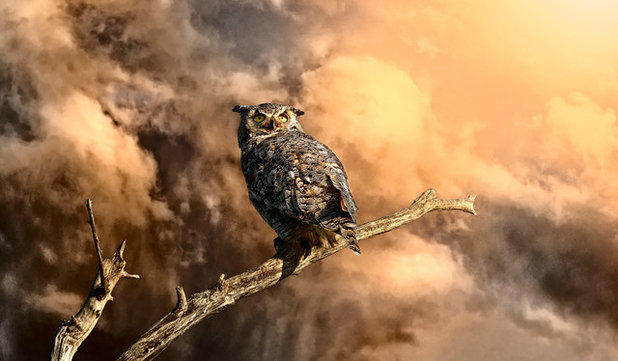
Pat Kavanagh
The great horned owl is a source of awe for all ages, with its haunting call, soul-penetrating stare and stealthy flight. Although well dispersed in the U.S., the nocturnal raptor is more likely to be heard than seen. Read on to learn about this formidable tufted-head hunter.
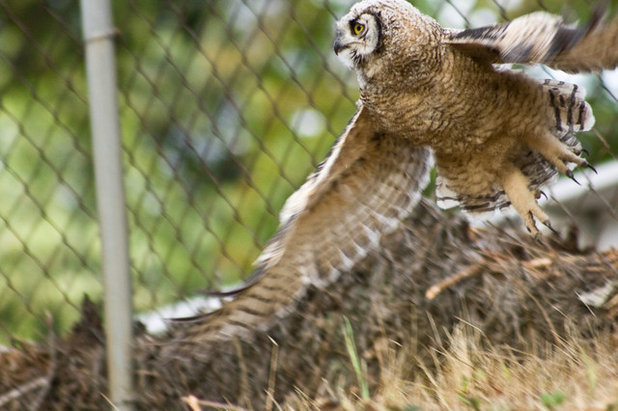 Latin name: Bubo virginianusCommon name:
Latin name: Bubo virginianusCommon name: Great horned owl
Distribution: Widespread throughout North and Central America, including Canada, Alaska and Mexico; also found in parts of South America
Photo by Michael Mees
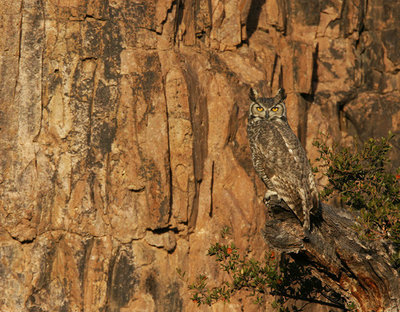 Habitat:
Habitat: Great horned owls are well-adapted to most biomes, from dry deserts to dense coniferous forests. In general, they seem to prefer forests with midsize trees that have regrown after a disturbance, since this environment tends to have plenty of places for nesting and resting in the sanctuary of trees as well as expansive space for dawn, dusk and evening hunts.
Like many adaptable birds, great horns are known to take up residence in suburban and urban neighborhoods and parks. This makes hearing their call possible in remote locations and city centers.
Photo by Gregory “Slobirdr” Smith
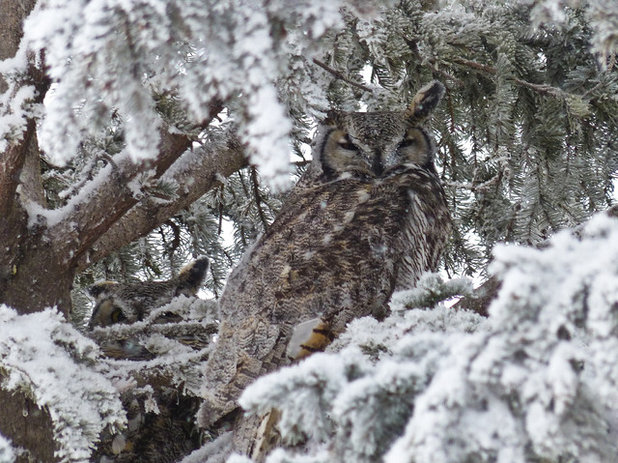
Anne Elliott
When to look (or listen) for them. Year-round, these majestic resident birds bless our landscapes with their barred plumage, animated ear-like tufts and deep, resonant calls. You may be lucky enough to spot a great horn while out on a dusk hike. More likely, a quick, soundless shadow will spook your night vision when the owl moves from one perch to another. Even more likely, you may hear the
hoo hoodoo hoooo hoo call of a territorial male or female. The pattern of their calls is similar, with the female’s having a higher pitch.
Their year-round presence means they can be spotted anytime, but their winter nesting behavior — while they’re actively defending territory — makes it easier to find them. This is one reason why going owling can be an excellent activity on a cold winter night. Fresh snowfall to silence your walk in the woods is a bonus when scoping for their distinctive silhouette in the trees.
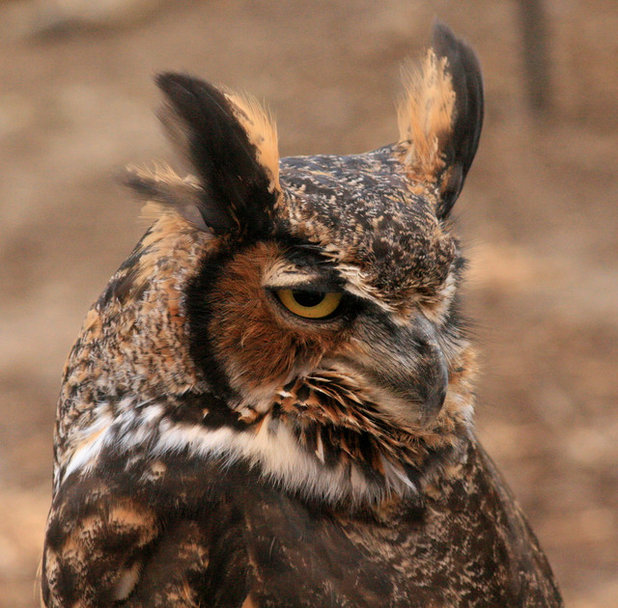 How to identify them.
How to identify them. These large, broad-winged, golden-eyed owls are well-known for the tufts of feathers on the sides of their heads, which is where they get their “horned” name. The feathers aren’t ears, as is commonly assumed, but their purpose is still a mystery to scientists. Some believe that they’re used for display, others for camouflage. Like many owls, great horns have feather plates on their faces that direct sound toward their ears. Along with the ability to turn their heads more than 180 degrees, this helps them locate prey in the dark.
Photo by Cindy See
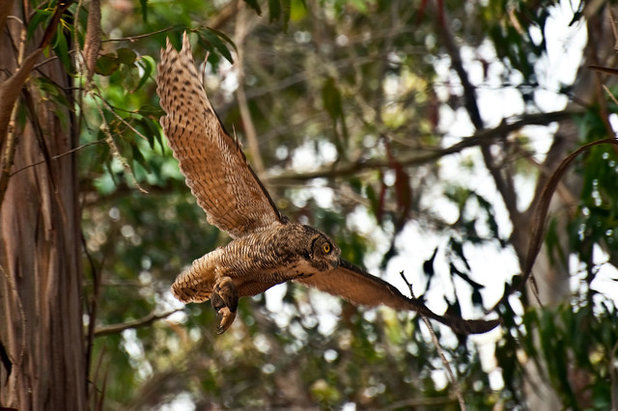
Great horned owls also have a thick layer of soft feathers that keep them well insulated in winter. The leading edge of their primary feathers is serrated like a comb and breaks up airflow during flight. This, combined with soft and fuzzy hair-like fluff on their flight feathers, makes them almost silent fliers — a distinct hunting advantage since their prey can’t hear them coming.
Photo by Anita Ritenour
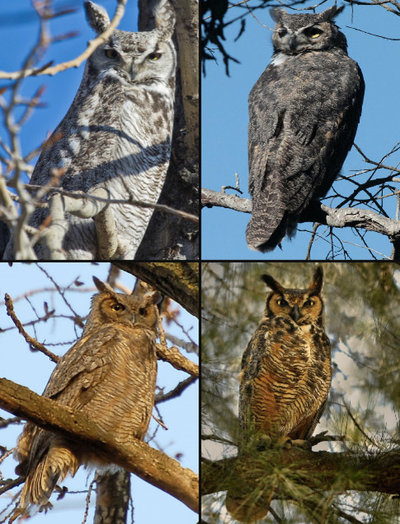
In the U.S., their coloration varies slightly by region. Great horns in areas with deep snowfall show a dominance of white or gray (top far left) while in the Pacific Northwest, they have darker banding (top left). Variations of light brown feathers (bottom far left) and red feathers are found on owls in other locations.
Photos by, clockwise from top left, David A Mitchell, NatureShutterbug, Andrea Westmoreland
and Derek Bakken
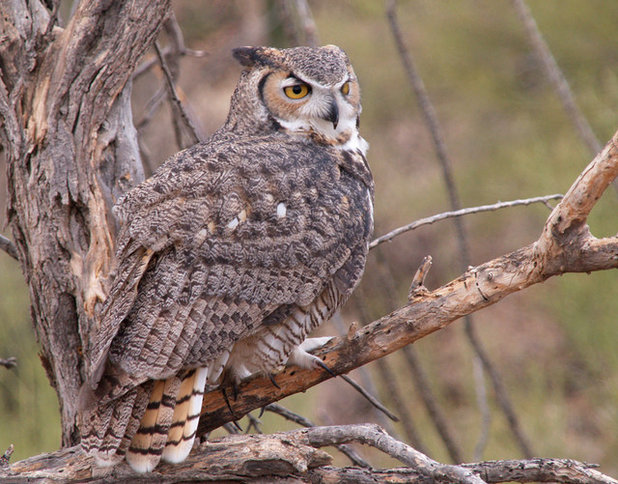
There’s no color or pattern differentiation between males and females of this species. However, females are larger than males, demonstrating a minor sexual dimorphism.
Photo by Jöshua Barnett
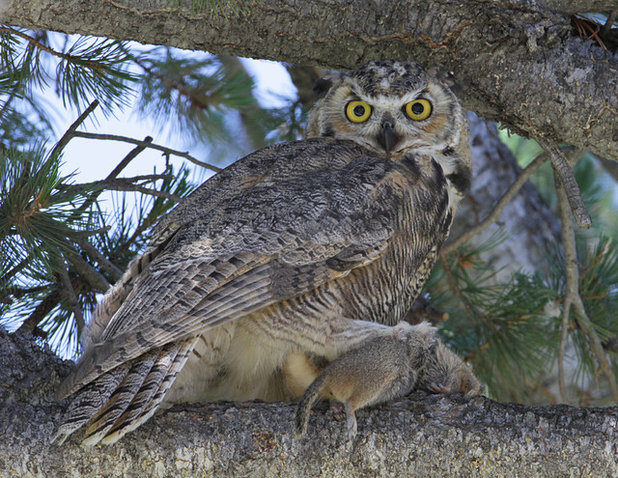 How to Attract Great Horned OwlsLet them find you.
How to Attract Great Horned OwlsLet them find you. If you live in an area that meets their needs — ample feeding and nesting habitat — they’ll likely call your neighborhood home. They can be spotted on tree branches, cliffs, light posts or rooftops. Sometimes they can even be seen hunting during the day, especially in winter.
Photo by Jim Peaco for Yellowstone National Park

Ike Kligerman Barkley
As raptors, their main concern is having enough accessible prey. They’re drawn to areas with high populations of small mammals, such as rabbits, hares, mice, voles, moles, shrews, rats, gophers, chipmunks, squirrels, woodchucks, marmots, prairie dogs, bats, skunks, house cats and porcupines. They’ll also eat birds, such as coots, ducks, loons, mergansers, grebes, rails, owls, hawks, crows, ravens, doves and starlings.
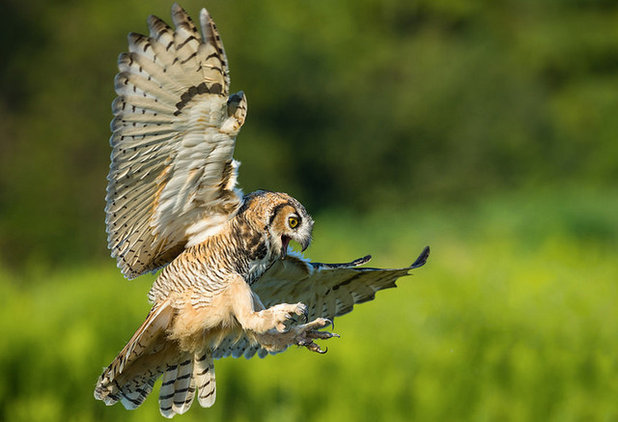
Randy Pryde
Great horned owls sometimes hunt animals that are larger than they are. They’re immensely powerful, severing their prey’s spine almost immediately upon capture with a grip so strong that it would take 28 pounds of force to pry open their clenched talons. Once caught by a great horn, the prey finds it hard to escape.
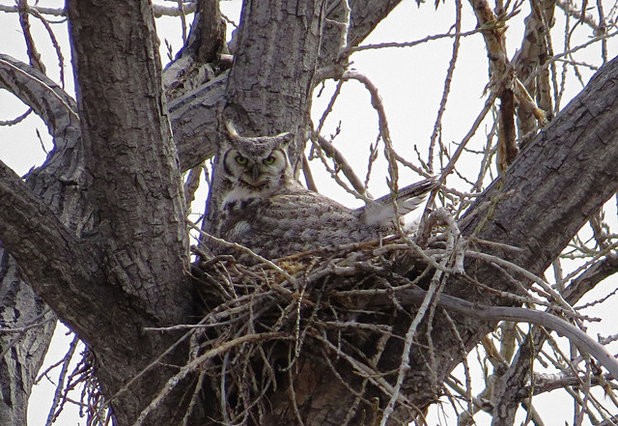 Offer the ideal habitat.
Offer the ideal habitat. Great horned owls frequently reuse the nests of other raptors in trees like cottonwood, juniper, beech, pine and more. Sometimes they’ll nest on ledges or buildings or in human-designed nesting boxes, but this is rare. Once they adopt a nest, they may line it with bark or their own feathers or owl pellets (indigestible food that they regurgitate).
Photo by nature80020
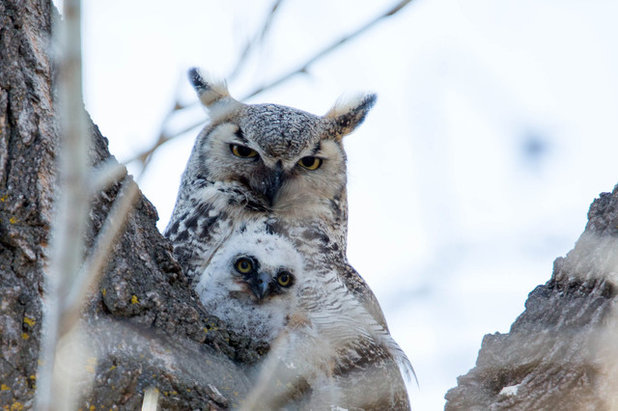
Great horned owls lay one to four eggs. Depending on the owls’ location, this can happen anytime from November through February. The female does the incubation, which lasts about a month until the eggs hatch. The male’s role is to provide food for the female and offspring. The female will leave the nest to feed when she’s incubating, but, depending on the temperatures and pressures from predators, she’ll limit her time away from her young.
Here is excellent BirdCam video of great horned owls during breeding season. Fair warning: Baby owls are addictively cute.
Photo by David A Mitchell
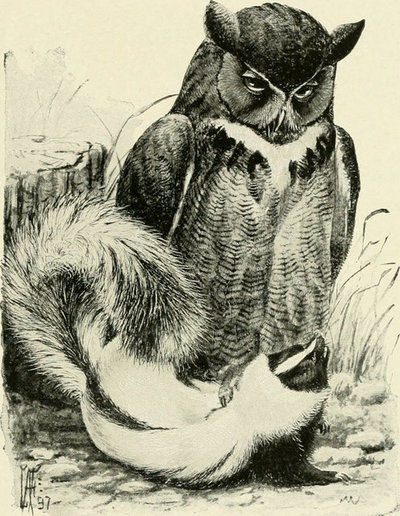 More About OwlsGreat horned owls are effective predators of skunks.
More About OwlsGreat horned owls are effective predators of skunks. Because great horns can’t smell the strong odor, the skunks’ defense mechanism — so effective against other predators — is ineffective at warding off the winged hunters.
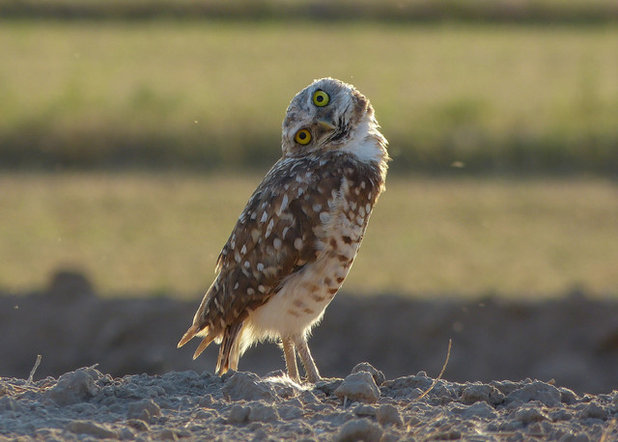 Not all owls hang out in trees.
Not all owls hang out in trees. One of the most animated of owls, the burrowing owl (above) spends much of its life on the ground. It often uses the burrows of other animals for living and raising young.
Burrowing owls can be found year-round in Florida and the Southwest, and on the Central Plains in the summer. Because of environmental pressures throughout their habitat, they’re considered endangered or threatened in many states.
Photo by Mike’s Birds
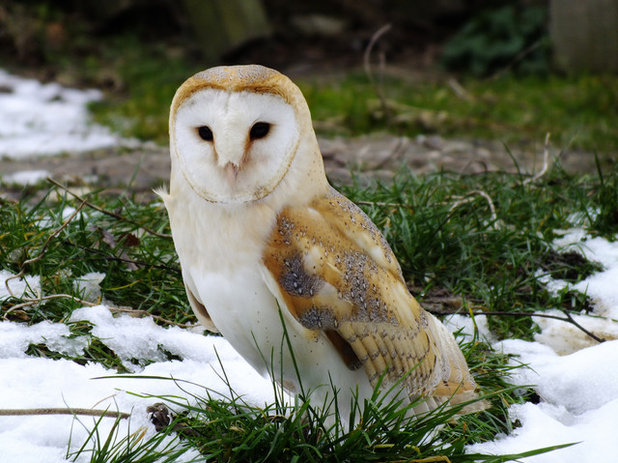 A barn owl will catch more than 2,000 rodents in one breeding season while raising young.
A barn owl will catch more than 2,000 rodents in one breeding season while raising young. Check the links below to learn how to create a box for a barn owl (above) and invite this natural “rodenticide” into your yard. Gophers beware.
Photo by Chris ParkerWant more owl info? Identify owl calls, see nest box designs or learn more about feathers.
YardMap is a citizen science project developed by the Cornell Lab of Ornithology, designed to cultivate a richer understanding of bird habitat, for both professional scientists and people concerned with their local environment. Thousands of people are documenting their conservation efforts at home to support birds and other wildlife in their yards.





